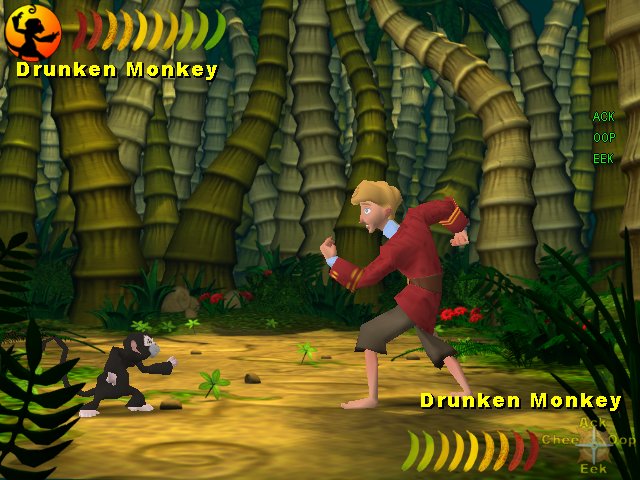
Escape From Monkey Island
Written by: Jo
Date posted: August 16, 2008
- Genre: Adventure
- Developed by: LucasArts
- Published by: LucasArts
- Year released: 2000
- Our score: 6
We’ve already mentioned the lengthy overblown rows about the sequels to the first two games [note: I swear that when this game first came out, reviews were criticising the third game as the poorest in the series, hence the format of my review. These days it seems this one is the least-loved – Rik]. We’ve seen devoted fans storming off in a sulk, we’ve heard repeatedly that LucasArts are big mean scumbags cashing in on the Monkey Island name, and how the Ron Gilbert titles will never be touched.
I have to admit to following the die-hard Ron Gilbert fans in that I was slightly apprehensive about Escape. When I first got the game (a whopping eight years ago) I played through the intro and swiftly abandoned it. I had written the game off for failing to hold my attention, and I remember being irritated by the new 3D controls. But in honesty, once I had learned that Gilbert didn’t design it, I merely pinned my dislike to that fact (somewhat hypocritically considering I loved the third game).
So when it came to reviewing it I decided to clear away my biased views and start afresh. I retrieved the game from the reject bin, dusted it off and played all thirty hours of it from start to finish. Needless to say, I’ve revised my opinion. My initial hostility has subsided, but I can’t say that I’m fully converted. It’s good, but it’s not right and I think I may have figured out why (more on this later).
Following on from where Curse of Monkey Island left off, Guybrush and Elaine return from a lengthy honeymoon sailing around the Caribbean. On arriving back to an eerily quiet Melee Island, they are soon informed that Elaine has been pronounced dead and that the Governor’s Mansion is about to be destroyed. In other news, an Australian land developer has been the winner in various ‘insult games’ in which the challenged pirates lose everything they own (including their homes). To make matters worse, an unknown pirate known as ‘Charles L Charles’ is running in the election for the new Governor. Your first task as Guybrush (as ever) is to get together a map, a ship and a crew in order to sail to Lucre Island, seek out the Marley family lawyers and fight city hall in an attempt to be legally classified as ‘alive’. Once Guybrush hits Lucre Island, the trouble really begins, and the plot thickens.
Only the plot never really does thicken. In fact, the story is a bit patchy, and at times, you can lose track of what’s actually going on. Adventure games have always been about story – solving a few puzzles, watching the occasional cutscene and so on and so forth allowing the plot to move forward. Yes, there are those tedious moments where we get completely stuck and lost and don’t want to play anymore, but with any good adventure these are momentary blips. Escape’s problem is that there are massive, overly long chunks of gameplay where you’re tackling puzzle upon puzzle upon puzzle, eventually culminating in a lengthy cut scene where more of the story is unveiled.
In other words, the story fails to progress gradually as the puzzles are solved. It’s frustrating and annoying, especially when you consider Monkey Island’s reputation for storytelling. Halfway through the more cryptic puzzles, I’d start wondering what I was doing and why? Solving a puzzle (a classic adventure-logic type puzzle) should mean progress in the story and if not, then what’s the point in trying to complete it (other than to rack up hours of frustrating gameplay)?
I can’t help but feel that the introduction of a 3D engine is partly to blame. Given that Curse came out a long while after the first two games, it looked pretty different thanks to the leap forward in technology. This change has occurred once again in Escape. This is largely due to the fact that around the time of its release the bottom had fallen out of the market for 2D adventures. Publishers wanted nothing to do with 2D animations, even if the graphics were shiny and cartoonesque (as seen in Curse of Monkey Island, Broken Sword and Toonstruck). Apparently no one wanted to play adventure games anymore anyway (although many argue this point). Those who wanted to continue to put adventures on the market could only gain interest by using a 3D engine of some sort. And LucasArts were no exception, turning to 3D in 1998 with the release of Grim Fandango, and continuing in the same vein when developing the latest Monkey Island game.
I don’t want to come off as a griping die-hard fan that loves the shitty graphics, but the transition from the 2D SCUMM engine to the 3D GRIME engine is quite a leap. It’s not just the graphics that are changing here – it’s the controls [EFMI is controlled with a joypad or the keyboard, so it’s no longer ‘point and click’ – Rik] and it’s the way in which we control the characters that, ultimately, leads to the way in which we solve the puzzles. The designers probably couldn’t help themselves putting a few out-of-the ordinary ‘interactive’ puzzles in there. Towards the end there’s a particularly frustrating ‘Monkey Kombat’ bit, which is actually pretty good fun once you get the hang of it. The problem, though, is getting the hang of it. I was nearly chewing my face off with frustration knowing that the end of the game was looming, yet I couldn’t get to it because the Kombat game was such an arse to figure out. Besides, once you do figure it out, it still takes an age to start progressing. In short, Monkey Kombat is an overly complex take on the insult sword fighting routine present in the previous Monkey Island games. Only it really is much more complex (I had to resort to an over-explanatory walkthrough, complete with diagrams, to finish it). I’ve always found cryptic/fighting puzzles in adventures a bit of a turn off (maybe that’s why I always preferred the Lucasarts adventures).
What I will say about the addition of the GRIME engine is that the 3D interpretations of Melee Island and the like are pretty good (with maybe the exception of the SCUMM bar – which looks a little like a bouncy castle from the outside). But it’s not all rehashed 3D versions of previous settings, we also get introduced to some new islands and characters. However, the designers have relied quite heavily on referencing the previous games (the first in particular) especially when it comes to the characters. We all like to see folk from previous games turning up in sequels, but Escape goes slightly overboard here in that it brings back characters from the first game that weren’t in the second or third. Not that this is a massive problem – in fact it brings with it a warming sense of nostalgia. But it can seem a bit forced in parts – as if the old characters are compensation for the more obvious, upgraded parts of the game that set it quite substantially apart from its predecessors.
One of the main gripes that most hardcore fans seem to have with these latter non-Gilbert designed games is that they’re ‘just not as funny’. I have to disagree entirely here. Escape is very sharp, and in my view the game is as self-aware and self-referential as ever. In fact the cynical slant on the humour seems to be even more prevalent in this fourth instalment (which may have something to do with the designers having both worked on Sam and Max Hit the Road). I’d even go so far as to say that at several points while playing Escape I actually laughed out loud. And I’m pretty sure that’s never happened before. Then again, I’m spending an awful lot of time alone these days – so that might just be me…
Overall, then, Escape from Monkey Island falls slightly short of the mark. Story-wise, its end objective is never fully established and the inclusion of more cryptic puzzles not only frustrate but can cause the player to lose sight of exactly what is achieved by solving them. As an adventure, it’s entirely playable and enjoyable, but as the Monkey Island games go it doesn’t quite measure up, no matter how faithful it tries to be to the original games. Still, despite the obvious differences (and the more subtle ones) Escape doesn’t deserve to be slung into the reject bin – nor does it deserve a grilling from the Hardcore Gilbert Fan Association.

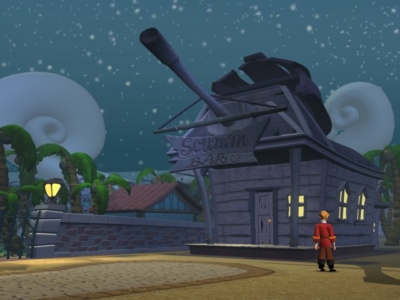
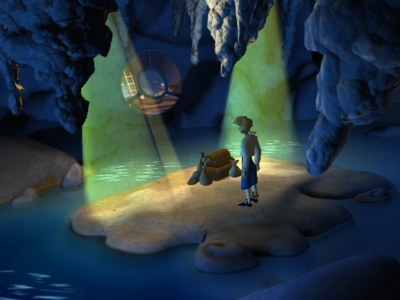
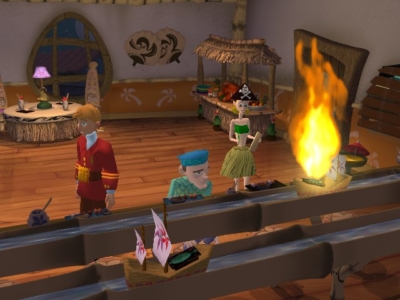
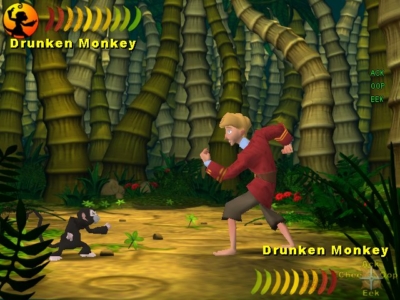

 Posts
Posts